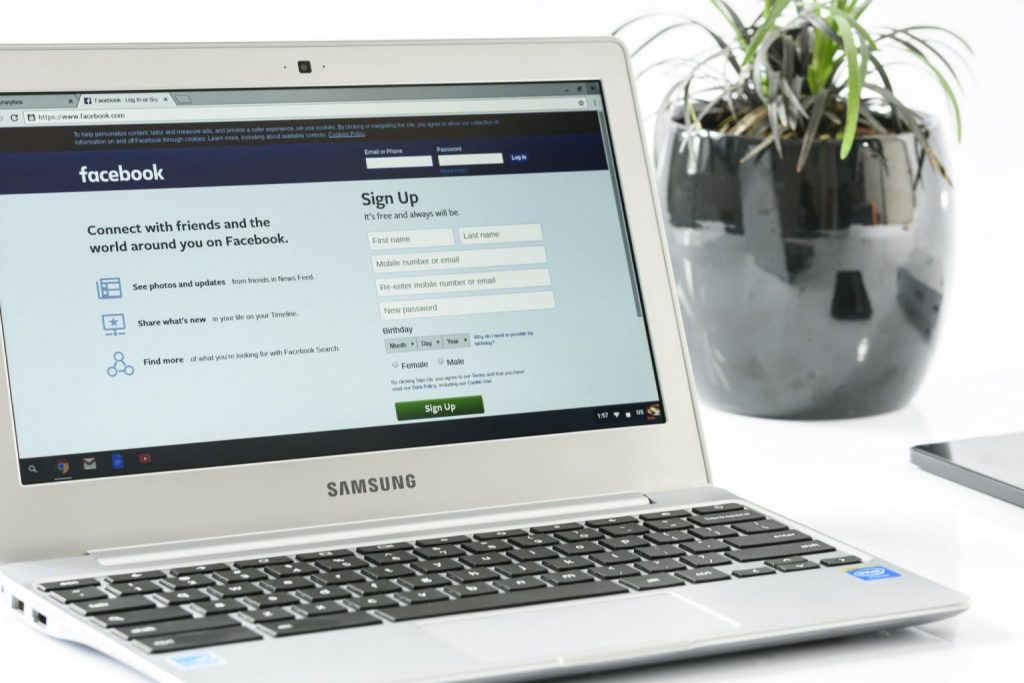When you create a Facebook Page for your website you can reach more potential customers and increase your online presence.
With a few simple steps, you can easily create a Facebook Page for your website that will help you engage with your customers and spread the word about your business.
In this blog post, we’ll show you how to create a Facebook Page for your website in seven easy steps. Keep reading to learn how!
Read Also: How to Secure Your Facebook Account to Avoid Being Hacked
How to Create a Facebook Page for Your Website

Here are simple steps to create a successful Facebook page for your website:
1) Decide on the Purpose of Your Page
Creating a Facebook Page for your website is a great way to engage with your target audience and share content. However, it is important to take the time to decide on the purpose of your page before you get started.
When it comes to Facebook Page creation, the purpose of the page should be clear. Do you want your page to act as a customer service hub, or do you want to use it to promote content?
Deciding on the purpose of your page helps you determine the type of content you should post and who to target with your ads.
Once you have identified the goal of your Facebook Page for your website, it’s time to move on to the next step of creating your page. Here are 8 easy steps to help get you started.
2) Fill Out Your Page Info
Step 1: Log into your Facebook account and go to the Facebook Page creation page.
Step 2: Fill out the basic information required to create a Page, such as the page name, category, profile picture, and page description
From there, you’ll be asked to choose a page category and give your page a name. Make sure you choose a name that represents your website or brand and is easy to remember.
Step 3: Set up the basics, such as adding admins and setting up payment settings if you plan to run ads.
Step 4: Add a CTA (call-to-action) button to the top of your page so that visitors can take a specific action on your page. This could be Like, Sign Up, or Shop Now, depending on what type of page you’re creating.
Step 5: Upload your website’s logo and create a custom cover photo. This will help make your page stand out from other Pages.
Step 6: Invite your contacts and friends to like your Page and engage with it.
3) Choose a Profile Picture and Cover Photo
An eye-catching profile and cover photo will make your page more engaging and attractive to potential customers.
When creating your Facebook page, the first step is to choose a profile picture and cover photo. The profile picture will be the face of your page, so it should reflect the essence of your website.
Make sure the image is professional and consistent with your branding. Your cover photo should be compelling and draw people in but don’t forget that the text should be easily readable.
With a great profile picture, cover photo, and well-crafted ads, you can set yourself up for success when creating a Facebook page for your website.
Taking the time to create a professional page will ensure that it looks great and performs well.
Ads are also an important element of your Facebook page. You can use ads to help promote your website or products or increase your reach.
When choosing images for ads, make sure they are eye-catching and relevant to what you are promoting.
4) Start Posting Content
You also have the option to add other administrators to the page if you need help managing it.
Now, it’s time to start posting content. Share blog posts, pictures, videos, and other content related to your website on your page. Be sure to engage with comments and messages left by fans of your page.
Finally, you can set up targeted ads on Facebook to reach people interested in visiting your website.
With Facebook Ads Manager, you can target specific demographics, interests, and geographic locations to get the most out of your ads.
5) Promote Your Page
Invite friends, family, and colleagues to like your page. Promote your page by running ads or boosting posts.
Here are key steps to take to promote your Facebook page:
i. Engage with Your Audience:
- Respond to comments and messages promptly.
- Encourage discussions and interactions on your posts.
- Use polls, questions, and contests to engage your audience.
ii. Collaborate and Share:
- Collaborate with influencers or complementary businesses to cross-promote each other’s pages.
- Post your Facebook page on other social media platforms, websites, and in your email signature.
iii. Boost Posts:
- Boosting a post can increase its reach among your followers and friends.
- Select the boosted post’s target audience, budget, and duration.
iv. Host Facebook Contests and Giveaways:
- Contests and giveaways can encourage engagement and attract new followers.
- Ensure your contests comply with Facebook’s rules and regulations.
v. Encourage User-Generated Content:
- Encourage your followers to create and share content related to your page.
- Highlight user-generated content to show appreciation.
vi. Collaborate with Facebook Groups:
- Participate in or create Facebook groups related to your page’s niche.
- Share valuable information and interact with group members.
vii. Consider Facebook Page Promotion Tools:
- Facebook offers various promotion tools, such as “Promote Your Page,” that can help increase your page’s visibility.
Read Also: Top 10 Internet Providers in Australia 2023
6) Use Facebook Ads
However, creating a page is just the beginning – you’ll need to get creative with marketing strategies to get your page seen and drive engagement. One effective strategy for doing this is through the use of Facebook Ads.
Facebook Ads are pay-per-click advertisements that can be targeted to reach a specific audience and have a huge potential to get your page seen.
When creating an ad, there are several elements to consider:
i. Budget
When setting up an ad, you must determine its budget. The budget will depend on your audience’s size and your campaign’s overall goals.
ii. Target Audience
You should clearly understand who your target audience is so that you can tailor your ads accordingly.
iii. Ad Creative
This visual content will be used to represent your ad. Create something eye-catching that will stand out in users’ newsfeeds.
iv. Call-to-Action
What action do you want your audience to take after seeing your ad? This should be clear and concise to ensure users know exactly what you want them to do.
Once you’ve set up your ad, tracking its performance is important to see how it’s impacting your Facebook Page creation efforts.
You can do this using the Ads Manager feature within Facebook or leveraging third-party tracking tools. This will allow you to see what strategies are working and which need improvement.
By taking advantage of Facebook Ads, you can ensure that more people see your page and increase your website’s engagement. It’s an effective way to reach a larger audience and grow your brand presence.
7) Analyze Your Insights
By analyzing the data from your Facebook Page creation, you can make informed decisions about optimizing and improving your page to get the best results for your website.
i. Monitor Your Audience
To get the most out of your Facebook Page for your website, you need to understand who is viewing your content. You can create targeted ads that will reach the right people by monitoring your audience.
ii. Analyze Engagement
Look at the engagement on each post to see what kind of content resonates with your audience. You can also use this data to inform future content and posts that will help to grow your audience.
iii. Track Clicks
Tracking clicks will give you an idea of which links generate the most interest from your audience. You can use this data to optimize your posts and create more interesting content.
iv. Measure Reach
Knowing how many people are seeing your content is essential for understanding your audience and how to reach them. Check how many people see each post and adjust how you post accordingly.
v. Compare Ads
If running ads, compare their performance and results to determine which ad works best for your goals. This will help you maximize your budget and target the right audience.
vi. Assess Content
Evaluate the content you’ve posted on your Page and adjust as needed. Ensure you deliver high-quality content that will engage and entertain your audience.
vii. Monitor Growth
Monitor the growth of your audience over time and track the success of any strategies you’ve implemented.
This will help you identify any areas of improvement and measure the success of any changes.
viii. Respond To Feedback
Feedback is key to creating a successful Facebook Page for your website. Ensure you engage with your followers and answer their questions or concerns.
Read Also: How To Lock And Unlock Keyboard On Dell Laptop
To Sum Up
By following these 7 easy steps, you can create a professional-looking Facebook Page for your website to help promote your brand and reach potential customers.
To maximize your page’s success, stay active by posting interesting content, responding to comments and messages, and running relevant ads.
With a bit of time and effort, you’ll soon have a thriving Facebook Page for your website!
RELATED POST
7 Best Vivo Mobile Phones in Nigeria 2023/2024
15 Easy Steps to Make Extra Money Online as a Student or an Employee in Nigeria
Airtel Data Plan: How to buy, YouTube Night Plan, Social Bundles, and Router bundles (2023)
Top 10 Best Gionee Phones Specifications and Prices In Nigeria
Top 10 best generator to buy in Nigeria
